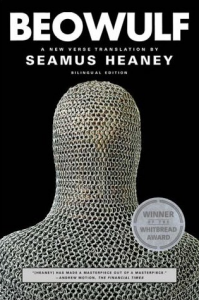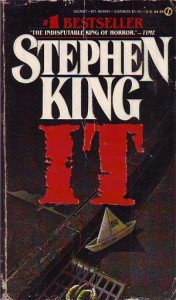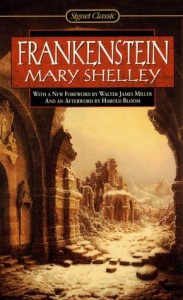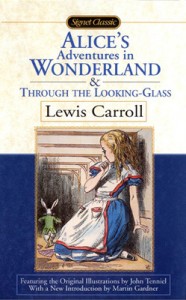 “Tough Traveling” is a weekly Thursday feature created by Nathan at Review Barn where participants make a new list each week based on The Tough Guide to Fantasyland by Diana Wynne Jones. This hilarious little book cheerfully pokes fun at the most prevalent tropes in fantasy. All are welcome to take part, and there is a link up over at his site. Join in any time!
“Tough Traveling” is a weekly Thursday feature created by Nathan at Review Barn where participants make a new list each week based on The Tough Guide to Fantasyland by Diana Wynne Jones. This hilarious little book cheerfully pokes fun at the most prevalent tropes in fantasy. All are welcome to take part, and there is a link up over at his site. Join in any time!
This week’s trope is MONSTERS:
MONSTERS are likely to lie in waste areas, caves, and old ruined cities. You can usually detect their presence by smell.
I love this trope! It’s a gold-mine for a classic lit. lover like myself. Let the monster mash begin!
 Grendel – Beowulf by Unknown AuthorGrendel’s exact appearance is never actually described in Beowulf and it’s the subject of a pretty heated scholarly debate. What we do know about him is that he’s descended from Cain (the first murderer) and that he’s associated with darkness. Everyone fears him except Beowulf himself, and honestly I don’t blame them. Grendel is murderous and frankly quite creepy, especially when you consider the fact that he inspired another very famous monster: Tolkien’s Gollum. And guess what – he lives in a cave! Grendel – Beowulf by Unknown AuthorGrendel’s exact appearance is never actually described in Beowulf and it’s the subject of a pretty heated scholarly debate. What we do know about him is that he’s descended from Cain (the first murderer) and that he’s associated with darkness. Everyone fears him except Beowulf himself, and honestly I don’t blame them. Grendel is murderous and frankly quite creepy, especially when you consider the fact that he inspired another very famous monster: Tolkien’s Gollum. And guess what – he lives in a cave! |
 Pennywise – It by Stephen KingWas there anyone who read this book and wasn’t even a little bit weirded out by clowns afterwards? Clowns are not supposed to bite people’s arms off, okay?! All he wanted was a balloon!!!! I really don’t like clowns, and I don’t think it’s an exaggeration to say that Pennywise the dancing clown is the sole contributor. Thanks a lot, Stephen King. Dwells primarily in wasted areas like sewers. Pennywise – It by Stephen KingWas there anyone who read this book and wasn’t even a little bit weirded out by clowns afterwards? Clowns are not supposed to bite people’s arms off, okay?! All he wanted was a balloon!!!! I really don’t like clowns, and I don’t think it’s an exaggeration to say that Pennywise the dancing clown is the sole contributor. Thanks a lot, Stephen King. Dwells primarily in wasted areas like sewers. |
 Frankenstein’s Monster – Frankenstein by Mary ShelleyThis is it boys and girls, the number one most iconic monster in all of literature. Shelley write that his skin is translucent yellow such that you can see his organs beneath; he also has watery, glowing eyes, and black lips. Honestly I feel bad for the guy – he didn’t ask for any of this and it’s not his fault that society rejects him at every turn. Of course, he does kill a crap load of people, so…definitely still a monster. Frankenstein’s Monster – Frankenstein by Mary ShelleyThis is it boys and girls, the number one most iconic monster in all of literature. Shelley write that his skin is translucent yellow such that you can see his organs beneath; he also has watery, glowing eyes, and black lips. Honestly I feel bad for the guy – he didn’t ask for any of this and it’s not his fault that society rejects him at every turn. Of course, he does kill a crap load of people, so…definitely still a monster. |
 The Jabberwock – Through the Looking Glass, and What Alice Found There by Lewis CarrollThe Jabberwock is one of my favourites! The term Jabberwock comes from Carroll’s nonsense poem “The Jabberwocky” which he wrote for Through the Looking Glass, and it describes a monster who catches and eats children. The Jabberwock has leathery wings and scales in most artistic representations of him. Fun fact: “The Jabberwocky” poem is actually the piece that introduced the word “chortle” (on of my favourite words!) into the English language. The Jabberwock – Through the Looking Glass, and What Alice Found There by Lewis CarrollThe Jabberwock is one of my favourites! The term Jabberwock comes from Carroll’s nonsense poem “The Jabberwocky” which he wrote for Through the Looking Glass, and it describes a monster who catches and eats children. The Jabberwock has leathery wings and scales in most artistic representations of him. Fun fact: “The Jabberwocky” poem is actually the piece that introduced the word “chortle” (on of my favourite words!) into the English language. |